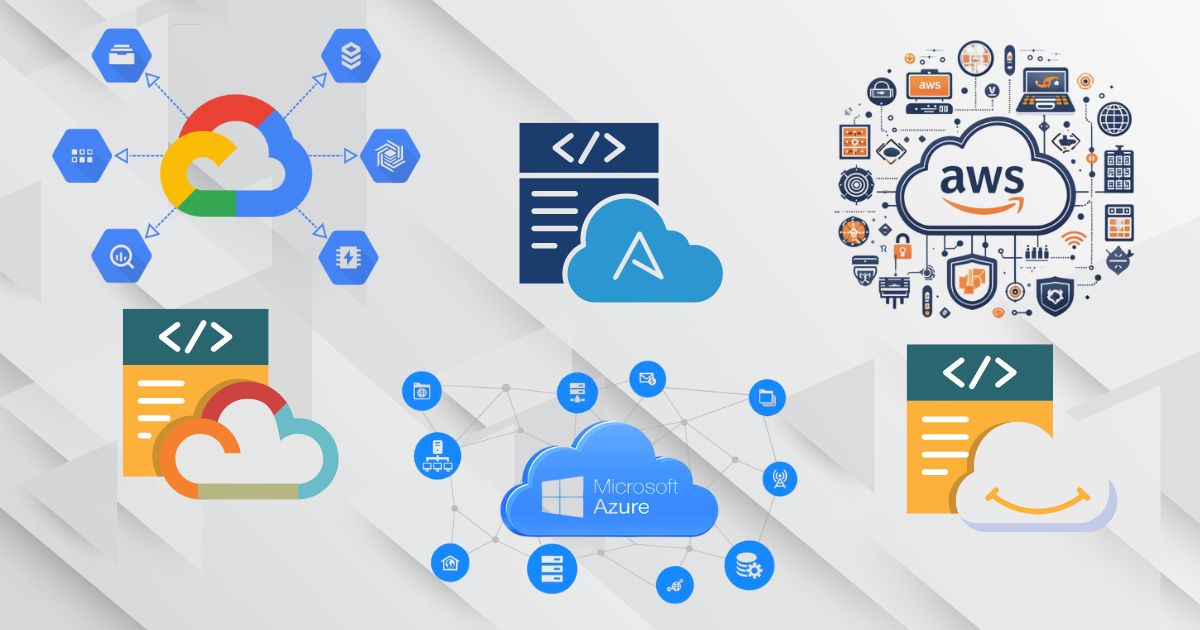Top data engineering skills are the abilities every data engineer needs to design, build, and manage systems that move and process data efficiently. These skills include programming, SQL, data modeling, big data tools, cloud platforms, pipeline automation, data quality, and communication.
Mastering them means you can handle complex datasets, keep information accurate, and deliver insights faster — skills that make you stand out to employers and open the door to higher-paying opportunities. In this guide, you’ll get a clear, practical breakdown of the most in-demand skills for 2025 and how each one can advance your data engineering career.
1. Mastering Python for Data Engineering and ETL Workflows
If you ask most data engineers what tool they can’t work without, many will say Python. It’s the language that drives modern data workflows — flexible enough to connect to databases, transform datasets, and automate repetitive tasks, yet simple enough to debug quickly when something goes wrong.
What makes Python so effective for data engineering is its ecosystem. Libraries like Pandas let you reshape data in memory with spreadsheet-like ease, while PySpark scales those transformations across massive datasets on distributed systems. Add NumPy for fast numerical operations, and you have a toolkit that can handle almost any stage of ETL.
The real skill is writing efficient, reusable code. That means building small, clear functions you can plug into different pipelines, avoiding unnecessary loops by using vectorized operations, and keeping scripts modular so they can grow with the project. This isn’t just cleaner code — it’s hours saved every time you process, clean, or move data.
Mastering Python this way isn’t about knowing every library. It’s about picking the right tools, writing for scale, and building workflows that are easy to maintain. That’s what separates someone who “knows Python” from someone who engineers data with it.
2. Advanced SQL Skills for Data Querying and Optimization

Every data pipeline, no matter how advanced, eventually uses SQL. It’s the language that lets you speak directly to the data — asking questions, shaping results, and pulling exactly what you need without hauling along excess rows and columns.
Basic SQL can get you answers. But in data engineering, you need queries that work fast, even against billions of records. That means understanding how the database processes your request. It’s knowing when a JOIN will get the job done and when it might slow everything to a crawl. It’s using window functions to handle analytics inside the database instead of exporting the data elsewhere.
Indexing is where a lot of performance is gained or lost. The right index can take a query from minutes to milliseconds, while the wrong one can waste storage and slow down writes. Partitioning large tables, limiting result sets, and avoiding unnecessary subqueries all help keep performance high.
The goal isn’t to memorize every SQL command. It’s to think like the database, seeing the most efficient route to the answer before you write a single line. That’s when you stop just “using SQL” and start engineering with it.
3. Designing and Implementing Scalable Data Models
Good data models are like strong foundations — invisible when they work, but everything rests on them. They decide how fast queries run, how easy it is to join datasets, and whether storage stays manageable as data grows.
The first choice is picking the right system. Relational databases keep data structured and consistent, while NoSQL options like MongoDB or Cassandra handle high-speed reads and flexible schemas. The right fit depends on the problem you’re solving, not personal preference.
Schema design shapes performance. For analytics, star schemas simplify reporting, while snowflake schemas save storage but add more joins. In operational systems, denormalizing can speed up reads but makes updates more complex — a trade-off you have to weigh.
Scaling means keeping performance steady as datasets grow. Techniques like partitioning, sharding, and targeted indexing help maintain speed without overloading resources.
A well-planned model doesn’t just store data — it makes every downstream task faster, cleaner, and easier to manage. Get it right, and you save time for yourself and every team that works with the data.
4. Apache Spark Skills for Big Data Processing
When data grows beyond what a single machine can handle, Apache Spark steps in. It’s built to process massive datasets quickly, whether you’re running batch jobs overnight or streaming live data by the second.
Spark’s speed comes from its ability to work across many machines at once, breaking tasks into smaller pieces and running them in parallel. For a data engineer, that means you can take the same transformation logic you’d run locally and scale it to terabytes without rewriting it from scratch.
The most common entry point is Spark SQL — it lets you query big datasets with familiar SQL syntax while taking advantage of distributed computing under the hood. DataFrames give you a more programmatic way to work with structured data, offering both flexibility and performance. If your workload involves real-time pipelines, Spark Streaming lets you process data in small batches as it arrives, keeping latency low.
The key to using Spark well is knowing how to optimize. That means minimizing shuffles, caching data you reuse, and understanding how partitions affect performance. Without this, Spark can still run, but you’ll waste resources and slow everything down.
For big data, Spark isn’t just another tool — it’s the bridge between raw, unmanageable datasets and fast, scalable processing that delivers results when you need them.
5. Building and Automating Data Pipelines with Apache Airflow
Data engineering isn’t just about moving data — it’s about moving it reliably, on time, and without constant babysitting. That’s where Apache Airflow comes in. It’s the go-to orchestration tool for building, scheduling, and monitoring pipelines that keep data flowing.
Airflow works by letting you define DAGs (Directed Acyclic Graphs) — visual maps of tasks that need to run, in the order they should run. This makes even complex workflows easier to understand and manage. Whether you’re extracting data from APIs, transforming it for analytics, or loading it into a warehouse, Airflow can handle each step and make sure it happens in the right sequence.
The real power comes from automation. Instead of running scripts manually or setting up fragile cron jobs, you can schedule Airflow to trigger processes at specific times or in response to events. If a task fails, it can retry automatically, send alerts, and pick up where it left off without starting from scratch.
For a data engineer, mastering Airflow isn’t just learning the commands — it’s about designing workflows that are resilient and easy to maintain. This involves implementing proper logging, establishing clear dependencies, and maintaining modular tasks that can be reused across projects.
A well-built Airflow pipeline doesn’t just deliver data — it delivers it predictably, even when things go wrong. That reliability is what keeps business decisions on track.
6. Cloud Data Engineering Skills (AWS, GCP, Azure)

Almost every modern data project runs in the cloud. For a data engineer, knowing how to work with at least one major cloud platform isn’t optional — it’s part of the job. The choice often comes down to AWS, Google Cloud, or Azure, and while the core concepts are similar, each has its own strengths.
In AWS, you might use S3 for storage, Redshift for warehousing, and Glue for ETL. In Google Cloud, BigQuery is the centerpiece for analytics, paired with Cloud Storage and Dataflow. Azure offers Data Factory for orchestration and Synapse Analytics for big data and BI workloads. The tools differ, but the underlying skills — managing storage, processing data, optimizing performance — apply across platforms.
Working in the cloud also means thinking about cost and scale. It’s easy to spin up powerful resources, but without monitoring, costs can spike overnight. That’s why part of cloud mastery is knowing how to choose the right instance types, store data in the most efficient format, and shut down unused services.
The goal isn’t to learn everything about every provider. It’s to get deep with one platform, understand its core services, and be comfortable adapting that knowledge to others. Once you can architect pipelines, manage storage, and control costs in one cloud, switching to another becomes far easier.
7. Ensuring Data Quality, Governance, and Security Compliance
Data is only valuable if it’s accurate, trustworthy, and secure. For a data engineer, that means building systems that not only move data but protect its integrity from source to destination.
Data quality starts with validation — checking that values are complete, formats are correct, and records aren’t duplicated. Automated checks help catch errors early so bad data doesn’t flow downstream and skew reports.
Governance is about control and accountability. That means tracking where data comes from, who has access to it, and how it’s used. A clear lineage makes it easier to troubleshoot issues and meet business or legal requirements.
Security is non-negotiable. Encrypt data both at rest and in transit, and use role-based access control (RBAC) to make sure only the right people see sensitive information. These steps don’t just protect against breaches — they build trust with stakeholders and customers.
Compliance isn’t just a box to check. Whether it’s GDPR, HIPAA, or another regulation, staying aligned with the rules keeps your organization safe from legal trouble and reputational damage.
Strong practices in quality, governance, and security mean your pipelines deliver not just data — but dependable, protected, and compliant data that people can act on with confidence.
8. Problem-Solving and Communication Skills for Data Engineers
The best data engineers aren’t just great with code — they’re great at solving problems that don’t have a clear starting point. In real projects, you won’t always get a clean dataset or a perfect set of requirements. Sometimes you’ll be told, “This report doesn’t look right”, and it’s your job to figure out whether the issue is in the data source, the transformation logic, or the way results are being interpreted.
Effective problem-solving in data engineering means breaking complex issues into smaller, testable steps. It’s being able to trace data through each stage of the pipeline, identify where it drifts from expectations, and apply a fix that doesn’t create new problems elsewhere.
Communication is what turns those solutions into results others can use. You might have found the bottleneck, but unless you can explain it clearly to analysts, product managers, or executives, the fix might never get implemented. Good communication also works in reverse — the better you understand what other teams need, the better you can design systems that serve them without unnecessary complexity.
These skills don’t replace technical expertise — they multiply its impact. A data engineer who can both solve problems quickly and explain them clearly becomes the go-to person when things are on the line. That’s how you move from being just part of the team to being indispensable.
Conclusion
Mastering the top data engineering skills isn’t just about keeping up with the industry — it’s about positioning yourself as the person who can turn raw, scattered data into reliable insights that drive decisions. Employers aren’t looking for engineers who simply know the tools; they want professionals who can combine technical expertise with problem-solving and clear communication to deliver results at scale.
The demand for skilled data engineers will keep growing in 2025, and the gap between average and exceptional talent will widen. If you focus on deepening these skills through real-world projects, optimizing your workflows for efficiency, and staying current with emerging tools, you’ll not only meet today’s expectations but also be ready for tomorrow’s challenges. In this field, the right skills don’t just open doors — they keep them open for years to come.




